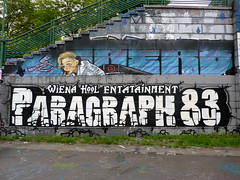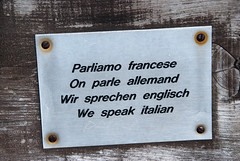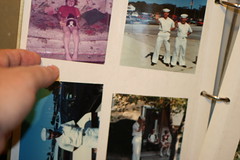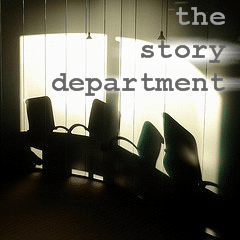There is at least one hard-and-fast (mostly) rule for paragraphing in fiction: when you change speakers, change paragraphs. But from there, things can get a little complicated.
If you have a character react to another character’s dialogue without speaking, does that get a separate paragraph? What if the first character continues speaking? Or, to use an example, how would you paragraph this (we’ll call it Exhibit A), assuming it’s the same person doing all the talking:
“That’s the stupidest blog post idea I’ve ever heard.” He scowled at his sister. She rolled her eyes heavenward and sighed, as if begging for the patience to endure him. He took her by the shoulders. “You’re only thinking like this because you’re editing.”
I don’t know that one way is better than another—it mostly depends on what you want to emphasize, and making sure your meaning’s clear. Interestingly, I’ve read a couple books published in the 1950s and ’60s lately, and there seems to have been a rule that every time someone starts speaking, you need a new paragraph, so this example might be:
“That’s the stupidest blog post idea I’ve ever heard.” He scowled at his sister. She rolled her eyes heavenward and sighed, as if begging for the patience to endure him. He took her by the shoulders.
“You’re only thinking like this because you’re editing.”
Which I find confusing, since I think the paragraph change is setting up a speaker change, and it’s not. ( And that might be precisely why they’ve shied away from that.)
And that might be precisely why they’ve shied away from that.)
Along those same lines, I made sure to include (in this totally-made-up-not-for-real example) a sentence that brought the speaker back into actor position before the second part of his dialogue to try to make it clearer who was speaking. (This may or may not be successful. We would assume it’s him because we haven’t changed paragraphs in the first example, but if the sister’s action was the last sentence before the second part of the dialogue, it might be hard to parse who’s supposed to be speaking. While we may want to “challenge” our readers, we probably don’t want to challenge them just to understand what’s happening 😉 .)
And then there’s narrating internal monologue. How do you think you’d do this in Exhibit B?
Terrence looked up as soon as he heard the hollow clack of high heels in the vestibule. Andrea came tripping in to the chapel, casting her eyes about hopefully. Terrence read people for a living. The way she leaned forward, her eyebrows drawn up inquisitively: she was eager to see him. And she only knew him as a lie. He suppressed a sigh.
How about Exhibit C?
Angelica nearly missed the meeting. Why she’d spent so long fussing over her hair was beyond her. No amount of fussing had ever made it behave particularly well—and she shouldn’t be so concerned about how she looked. She was lucky to reach her seat before the presentation began. But she was glad of the fussing as soon as they began the introductions—and she knew Mr. Griggs was there. She hadn’t seen him yet, but she could almost feel his presence. Or maybe his eyes on her.
How would you add paragraph breaks to these examples (if at all)?
Photo by kami68k







